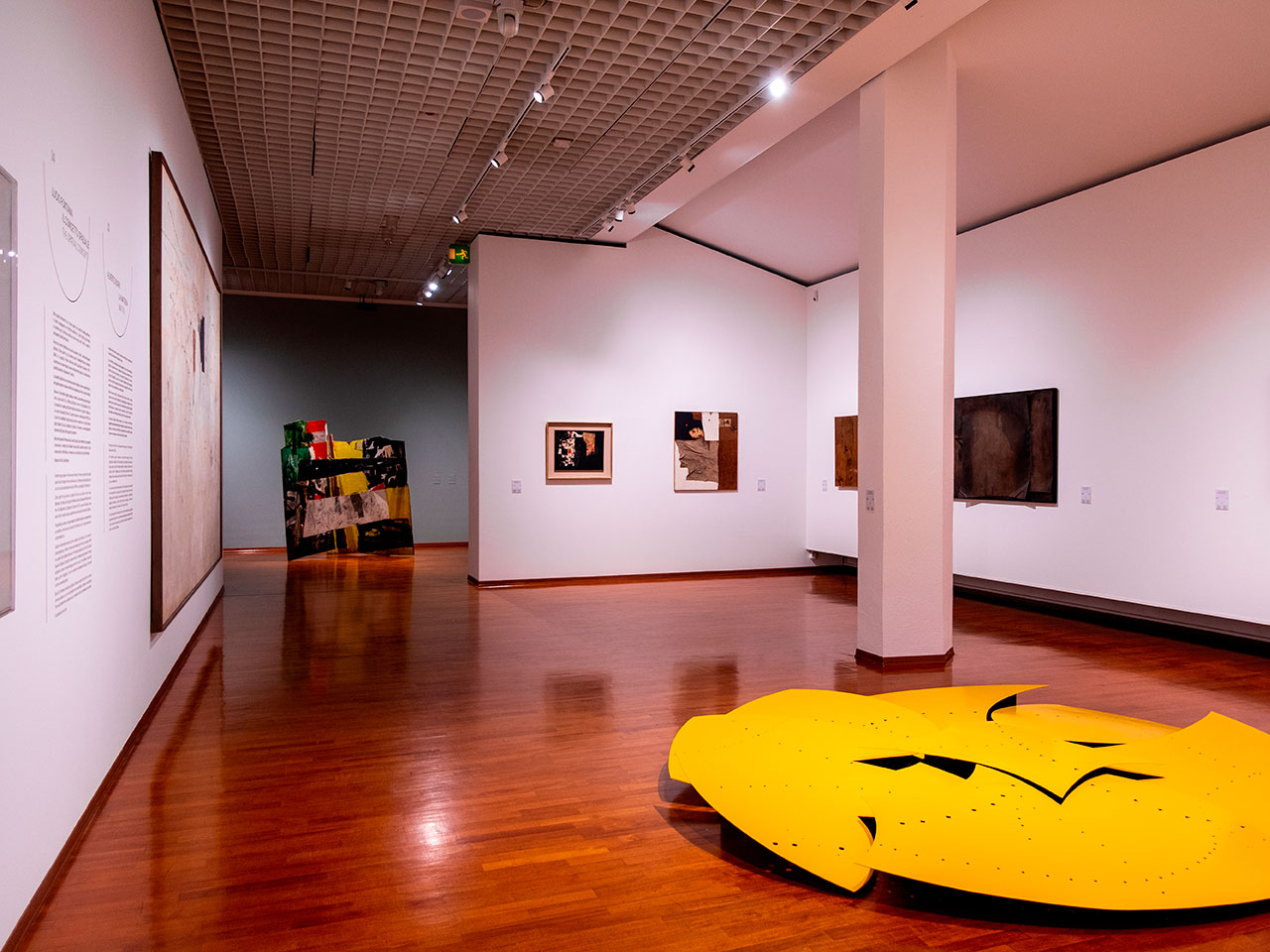In Italy, it's one of the first Modern and Contemporary Art galleries to be opened to the public. Today, GAM presents itself with a new installation of the historical 20th century collection that allows the centrality of the artwork to be restored. The visit is centred on the 20th century art section, which can be known and appreciated through the analysis of the most important and evocative works exhibited.
Guided tour allowed with a minimum of 2 participants.
The guided tour allows the visitor to linger in the different rooms of the museum, taking in the overall appearance of the rooms and works, and continuing with the description of paintings, sculptures and installations. The appointment with the guide is an opportun... more
The guided tour allows the visitor to linger in the different rooms of the museum, taking in the overall appearance of the rooms and works, and continuing with the description of paintings, sculptures and installations. The appointment with the guide is an opportunity to retrace the history of 20th century art from the historical Avant-gardes to the Informal, from New Dada and Pop Art to Arte Povera through the treasure of the city of Turin. Among the artists present: Giorgio de Chirico, Giorgio Morandi, Umberto Boccioni, Gino Severini, Otto Dix, Paul Klee, as well as Fausto Melotti, Lucio Fontana and international artists such as Marc Chagall and Pablo Picasso. The 1950s and Informal Art saw significant examples of Giuseppe Capogrossi and Antonio Sanfilippo, Emilio Vedova, Pietro Ruggeri and Giacomo Soffiantino. The New Dada and Pop Art language is represented by works by Piero Manzoni, Louise Nevelson, Yves Klein and Andy Warhol. All the artists of the movement theorised in 1967 by Germano Celant and first shown in a museum in 1970 are represented: Pier Paolo Calzolari, Mario Merz, Giuseppe Penone, Giovanni Anselmo, Alighiero Boetti, Jannis Kounellis, Michelangelo Pistoletto and Gilberto Zorio.
lessBy plane:
Turin Caselle International Airport is about 15 km from the centre. Connections to the city are provided by a shuttle bus service, with final destination the Porta Nuova railway station, which operates from 5:15 a.m. to 11:15 p.m. (journey time: approximately 40 minutes). The Torino Dora railway station can also be reached by train from the Caselle Aeroporto station (Turin-Ceres route) in 20 minutes with runs every half hour from 05:00 to 22:00. The airport also has an efficient car rental service.
By train:
Turin is a major national and international railway hub and has four railway stations: Porta Nuova, Porta Susa, Lingotto and Dora. At the main stations: Porta Nuova and Porta Susa, trains arrive from major Italian cities. The TGV to France also stops at Porta Susa.
By bus:
Departures of Italian and international bus lines take place from the terminals in Corso Inghilterra and from the Piazzale in front of the Porta Nuova and Porta Susa stations.
By car and motorbike:
Turin is at the crossroads of five motorways: the A21 Turin-Piacenza, the A4 Turin-Milan, the A6 Turin-Savona, the A32 Turin-Frejus-France and the A5 Turin-Ivrea. A dense network of state roads ensures connections with other cities in northern Italy and with the crossings to France.
Indicative road distances to Turin: from Milan 140 km; from Genoa 170 km; from Bologna 332 km; from Florence 395 km; from Rome 680 km. and from Venice 400 km.

Turin was the first Italian city to promote a public collection of Modern Art as a constituent part of its Museo Civico opened in 1863. The collections were first stored together with the Ancient Art collections in a building near the Mole Antonelliana and, in 1895, were moved to a pavilion overlooking Corso Galileo Ferraris built years earlier for an art exhibition. That pavilion was destroyed during the Second World War, and the current building was erected on the same site. It was inaugurated in 1959, then closed in the early 1980s and reopened to the public in 1993 after a thorough renovation. In addition to the galleries for the permanent exhibition, the museum complex consists of rooms for temporary exhibitions, rooms for educational activities, an art library and a rich photographic archive. Today its collections consist of more than 45,000 works including paintings, sculptures, installations and photographs, plus a rich collection of drawings and engravings and one of the most important European collections of artists' films and videos. Although currently not visible due to refurbishment works, the Museum houses works by the greatest artists of the Italian 19th century such as Canova, Fontanesi, Fattori, Medardo Rosso and Pellizza da Volpedo. The 20th century collections, on the other hand, are open to the public, presented in the new layout created in September 2020. The artists include Balla, Boccioni, Casorati, Modigliani, De Chirico, Martini, Morandi, De Pisis and Fontana as well as important works of the international historical avant-garde. These include Klee, Picabia, Picasso, Ernst, Dix and Calder together with works of the new post-World War II avant-garde through one of the most important collections of Arte Povera including works by Merz, Boetti, Pistoletto, Paolini, Zorio, Anselmo and Penone. The proposed guided tour focuses on these artists and the historical and cultural context in which they worked.